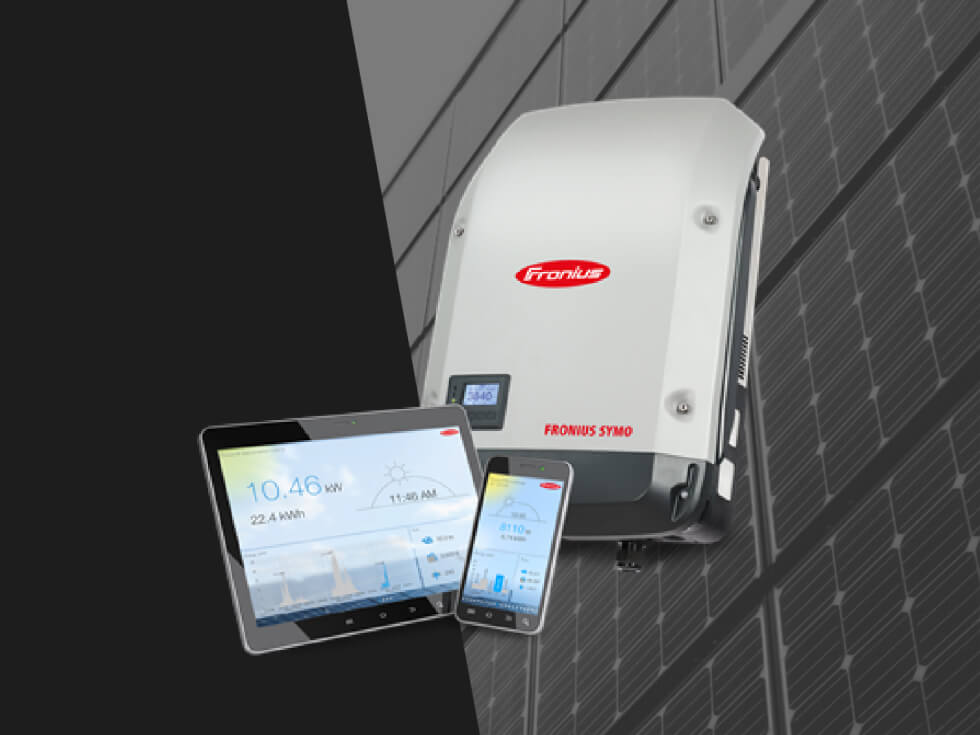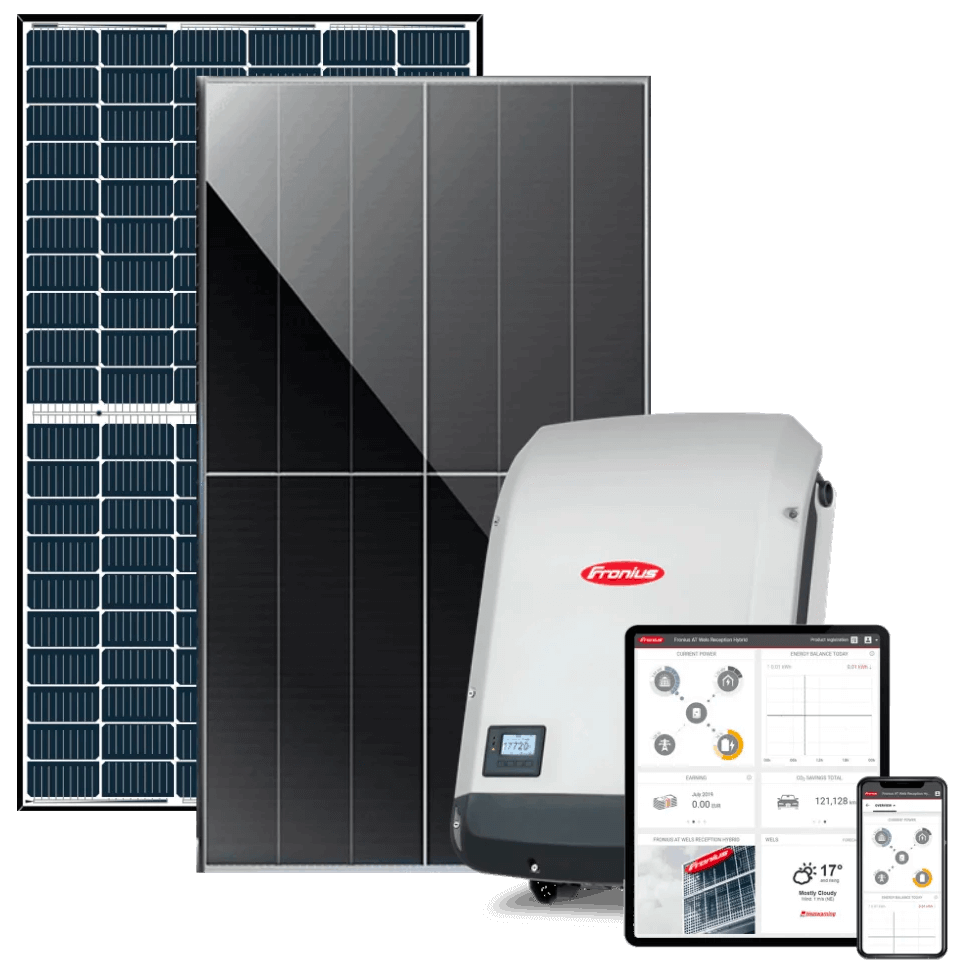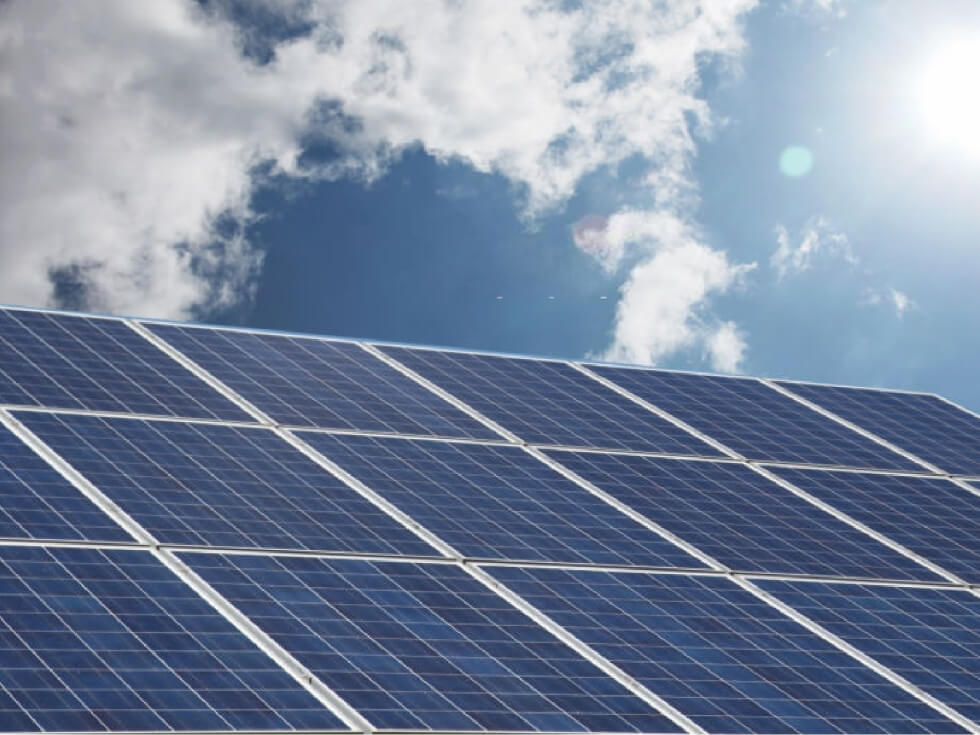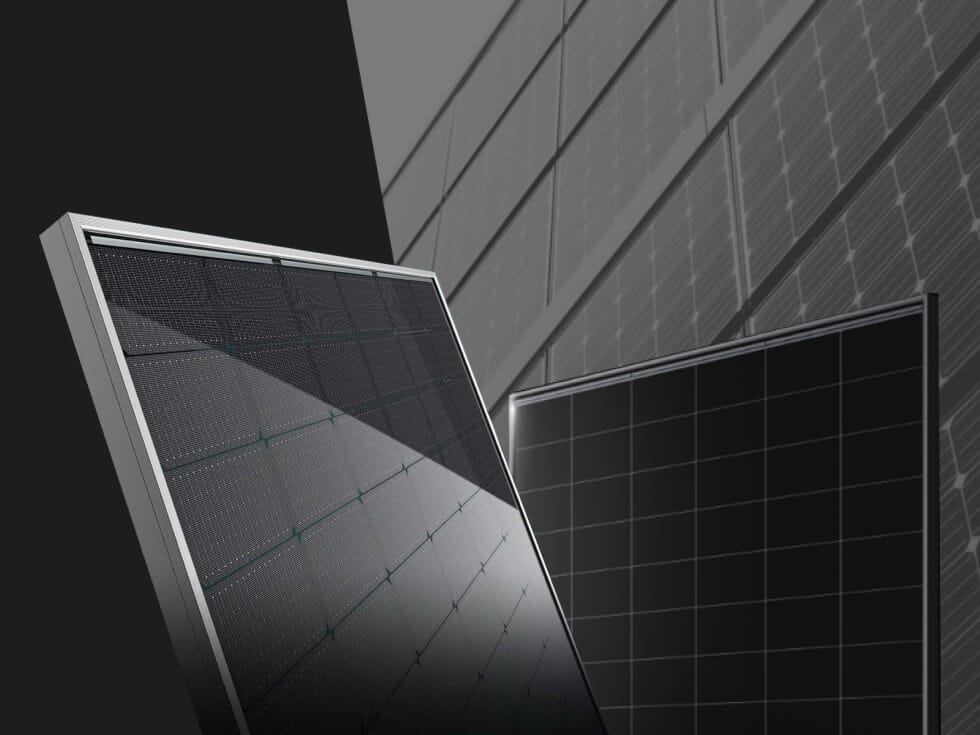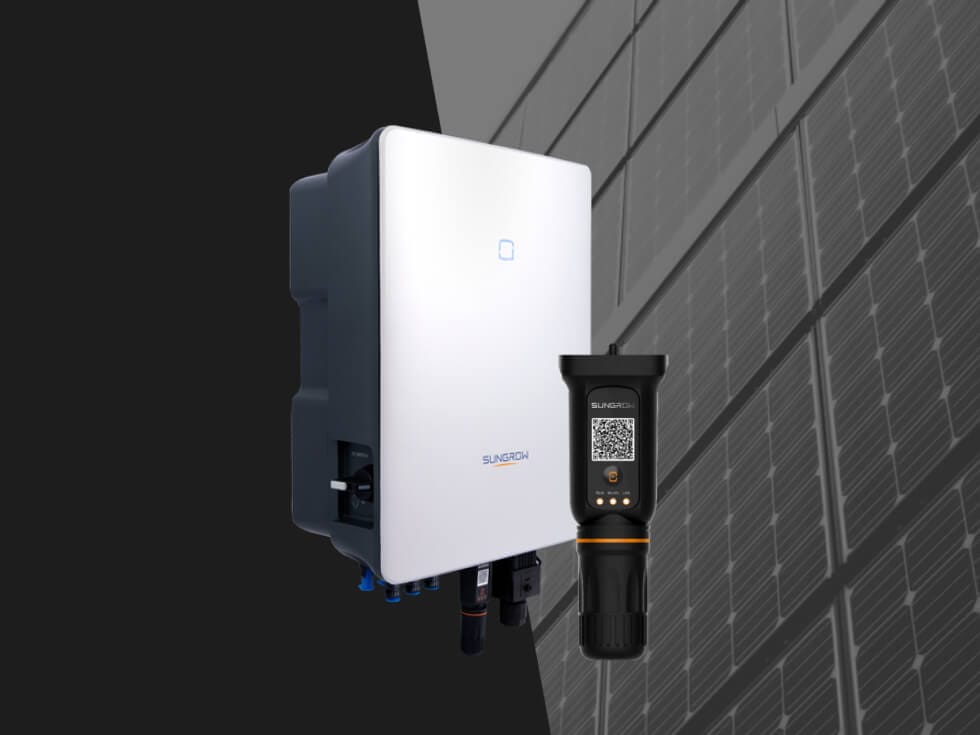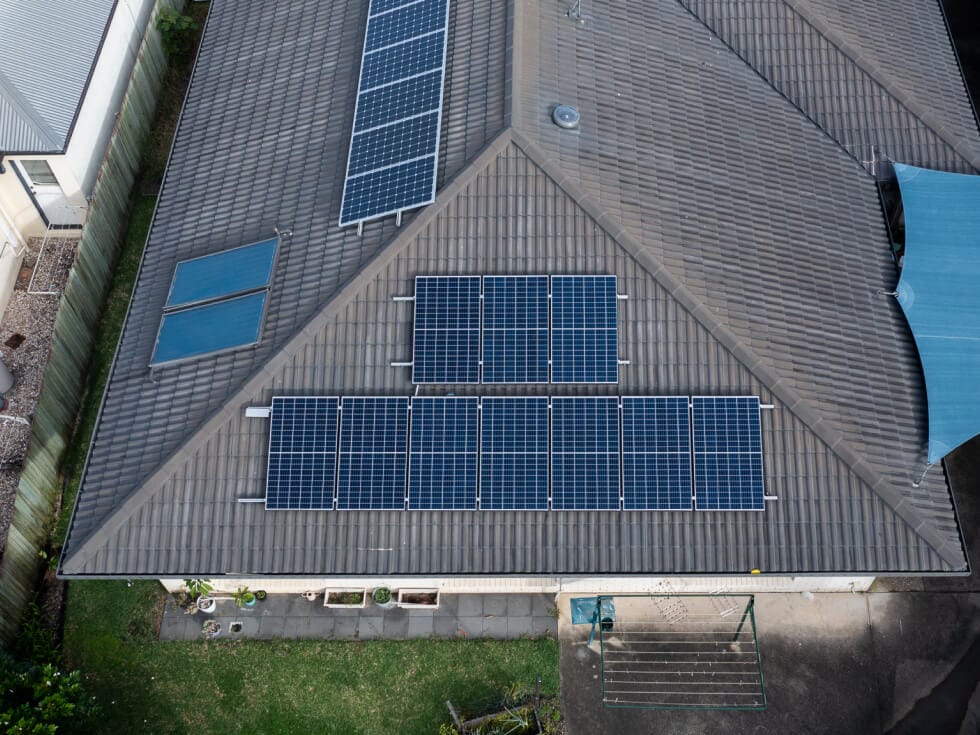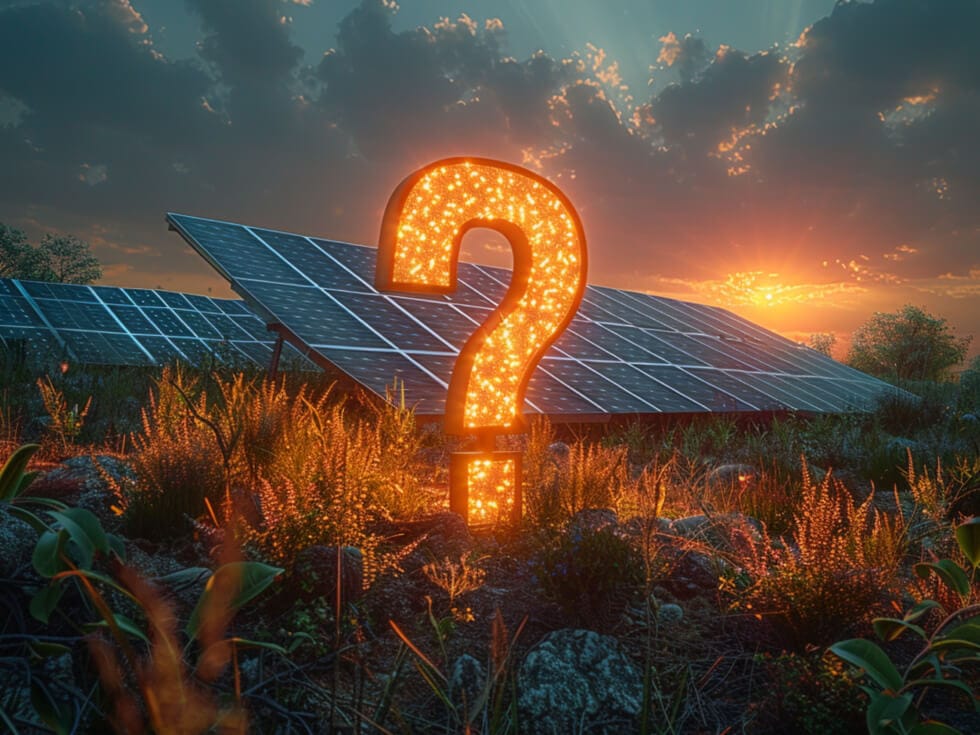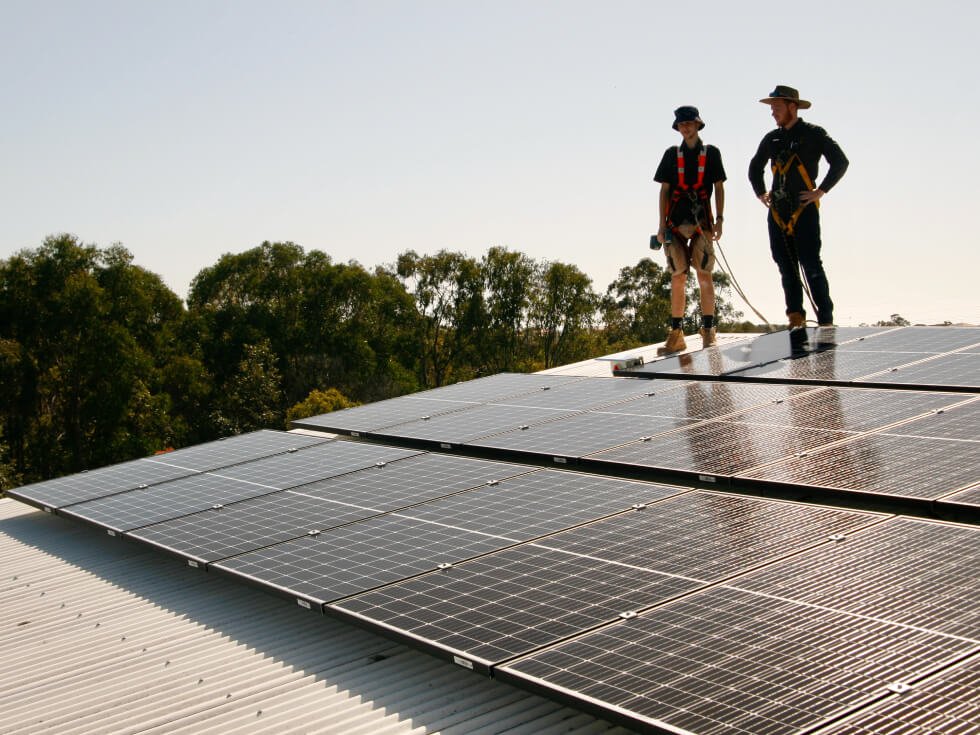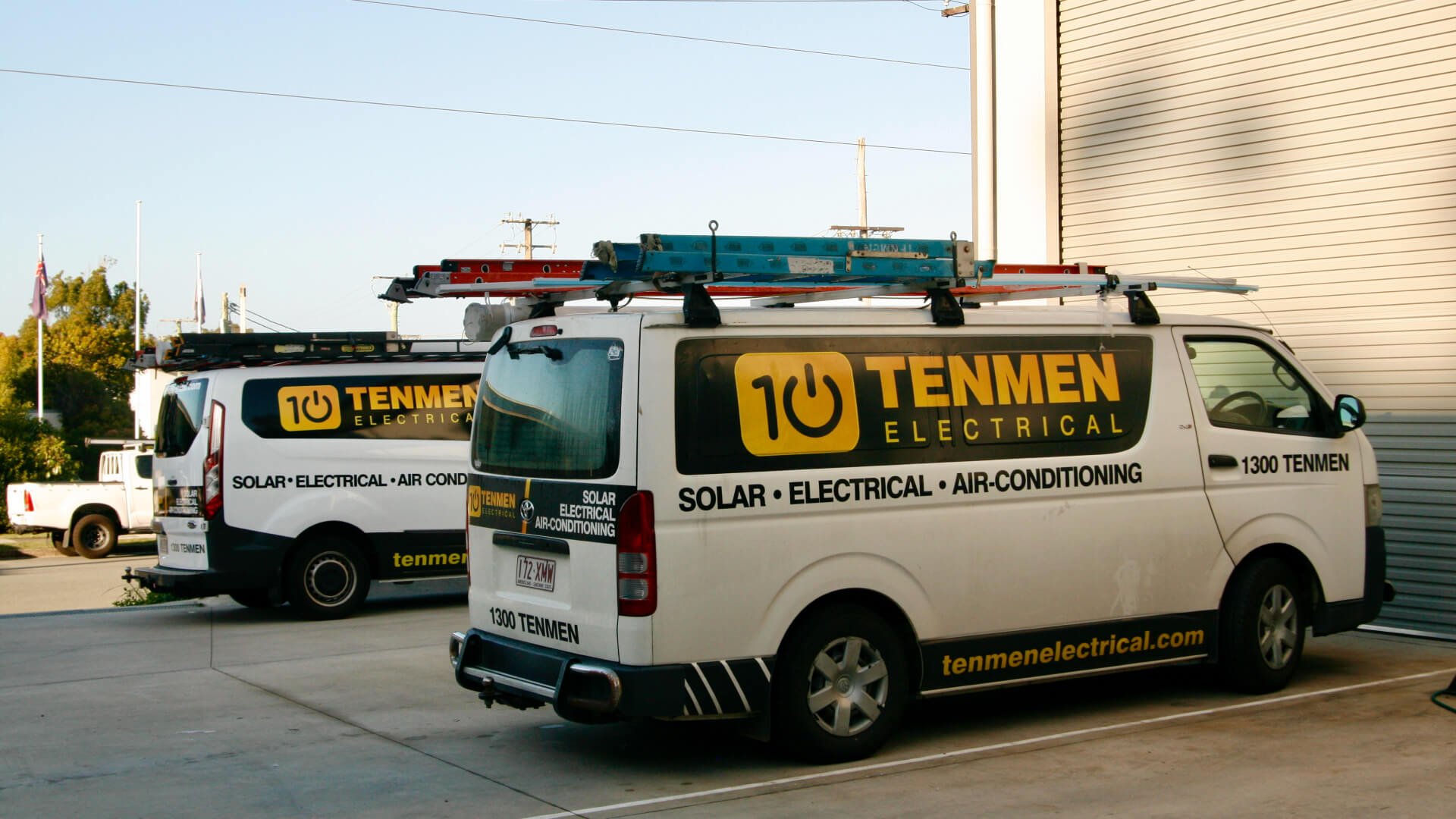Choosing the right solar inverter is an important detail for anyone installing solar panels on their home or business in Australia. The inverter is the heart of a solar power system, converting DC power from your panels into usable AC electricity. A quality inverter can maximise your energy yield, ensure safe operation, and last for many years with minimal issues.
In this updated 2025 guide, we’ll highlight the best solar inverters for Australian properties – with a focus on Clean Energy Council (CEC) approved models, local conditions, and the latest technology and incentives.
Why the Solar Inverter Matters
Solar inverters play an indispensable role in any solar power setup:
- Core Function: They convert the DC electricity generated by solar panels into AC electricity that your home appliances and the grid can use. Without an inverter, your solar panels can’t power anything in your home.
- System Performance: A good inverter maximises the energy harvest from your panels. It can optimise panel output (especially with technologies like panel optimisers or microinverters) and handle variations in sunlight (clouds, shading) efficiently.
- Safety and Compliance: Inverters have built-in safety mechanisms (e.g. anti-islanding, surge protection) to protect your home and comply with grid standards. In Australia, inverters must meet strict standards (AS/NZS 4777) and be CEC-approved to be connected to the grid.
- Monitoring: Most modern inverters come with smart monitoring apps or portals, letting you track your solar production (and sometimes your home’s consumption) in real time. In such cases, apart from being the heart of the system, they are also the brain, providing valuable data and diagnostics.
- Longevity: A reliable inverter ensures your system keeps running smoothly; if the inverter fails, the whole system stops producing. Therefore, investing in a quality inverter can save money and headaches long-term.
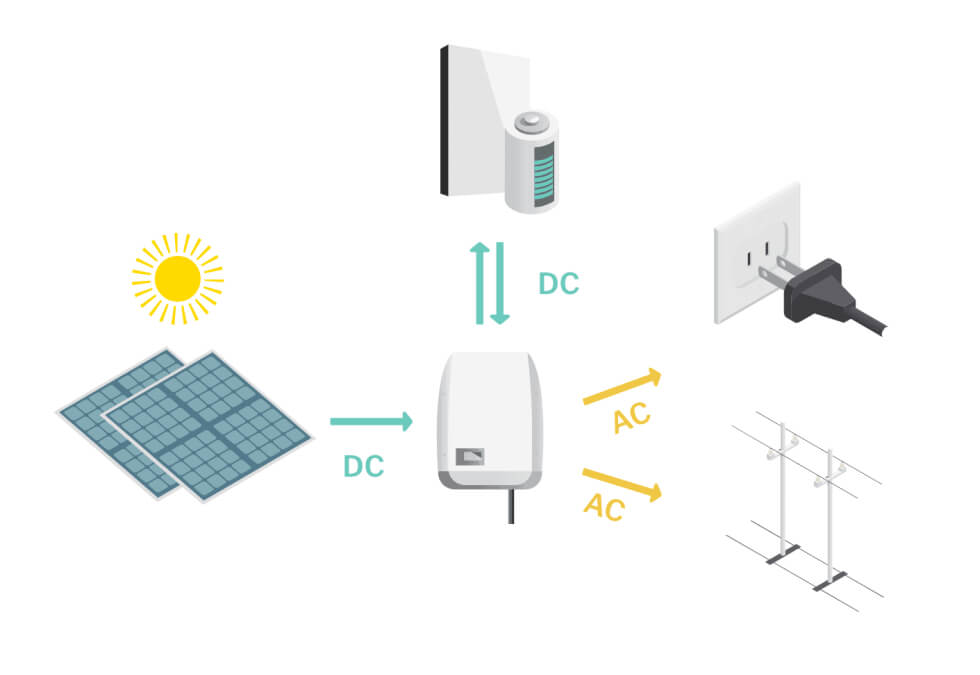
Key Factors for Choosing a Solar Inverter in Australia
With so many inverter options available, it’s important to know what truly matters when choosing the right one for your solar setup. Whether you’re powering a home or a business, these key factors will help you make a smart, future-ready choice in 2025:
1. Clean Energy Council (CEC) Approval
To qualify for Australia’s federal and state solar incentives (like STCs), your inverter must be approved by the Clean Energy Council. CEC approval ensures the product meets Australian safety and performance standards. All reputable installers will recommend CEC-listed models, but it’s still worth double-checking before purchase.
2. Inverter Type: String, Hybrid, or Micro
- String Inverters are the most common and cost-effective for homes with little or no shading. One unit manages the output from multiple panels.
- Hybrid Inverters are designed to work with both solar panels and battery storage, making them ideal if you plan to add a battery now or in the future.
- Microinverters are installed on each panel, offering maximum efficiency and performance in shaded or multi-directional roof layouts.
3. Efficiency Rating
A higher inverter efficiency means more of your solar power gets used. Look for models with at least 97% efficiency, with premium units achieving 98% or higher. Efficiency affects your long-term energy yield, especially in sunny climates like much of Australia.
4. Warranty & After-Sales Support
Most quality inverters come with a 10-year warranty, but the coverage details vary. Some include full replacement, while others may only cover parts. Brands with strong local support and fast warranty service are worth prioritising, especially if downtime means higher power bills.
5. Smart Monitoring Features
A good inverter should come with built-in WiFi and an intuitive app or online portal. Monitoring lets you track solar production in real time, detect faults early, and optimise your energy use. Some inverters even support consumption monitoring or smart home integrations.
6. Battery Compatibility
If you’re considering battery storage, either now or later, make sure your inverter supports it. Hybrid inverters are the most seamless solution for future-proofing, while standard string inverters can still work with AC-coupled batteries like the Tesla Powerwall.
7. Climate Durability
Australia’s harsh sun and heat can affect electronics. Look for inverters rated for high operating temperatures and with cooling mechanisms like fan-based or heat sink systems. Weather-sealed enclosures (IP65 or higher) are essential for outdoor installations, and shaded or ventilated locations are always recommended.
8. Price vs. Performance
Budget inverters may be tempting, but a higher upfront cost can pay off in reliability, efficiency, and support. If you consider your long-term goals, spending more now on a quality brand can reduce the risk of issues later. Still, there are excellent mid-range options that balance performance and value.
9. Brand Reputation
Stick with proven brands that have a strong track record in Australia. Check online reviews, ask your installer, and look at how long the brand has been operating locally. Well-supported brands like Fronius, Sungrow, Enphase, and GoodWe are popular for a reason—they perform well and stand behind their products.
Top Solar Inverters for Australian Homes
Now let’s dive in and look at some of the most recommended brands of solar inverters. We will present some of their top solar inverters and their characteristics so you can choose the one that is right for you.
On top of our list, we have Fronius, who has been involved in renewable energy since 1992, being solar energy their primary focus.
In addition to manufacturing solar inverters, Fronius has also worked on different research projects to make renewable energy ready for the future.
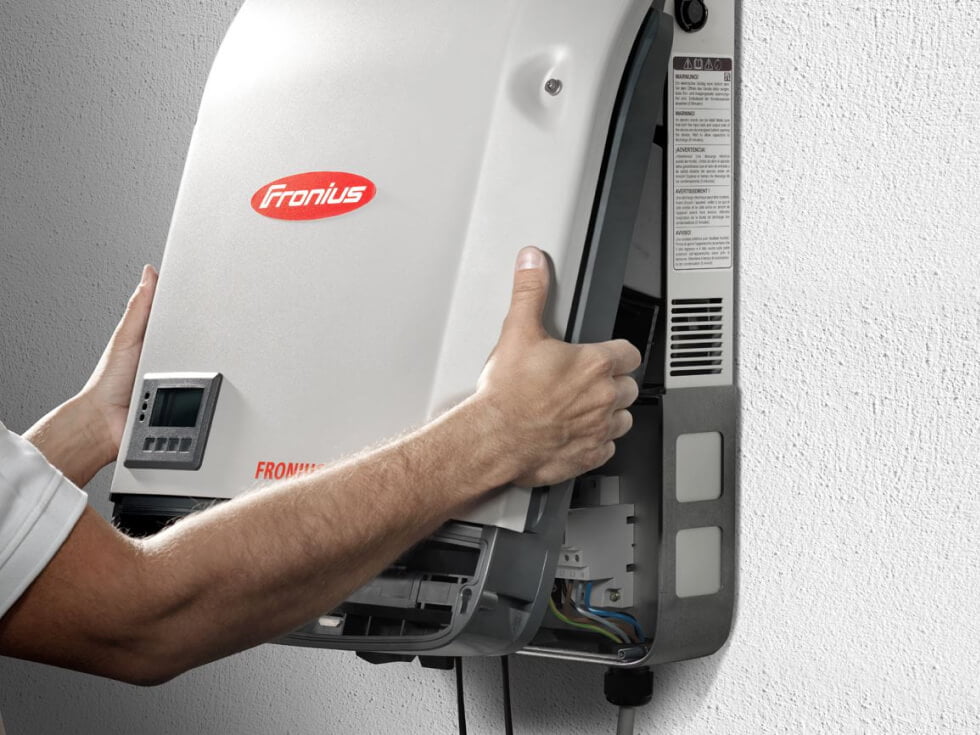
Why Fronius?
This high-end Austrian-manufactured brand is one of the top choices for solar installations in homes and businesses.
What customers love about Fronius inverters – apart from their excellent customer service – is the brand’s performance and reliability.
Most of Fronius’s Inverters are approved by the Clean Energy Council for the Small-scale Renewable Energy Scheme, which is Australia’s home STC program (financial incentives). You might have heard that the Fronius Symo Hybrid is excluded from this list, but that’s no longer the case. This inverter was recently added to the list of approved inverters on 12/08/2020.
Fronius Range of Solar Inverters
There are different models of Fronius inverters, some of which are designed to cover the needs of residential homes, while others are focused on bigger commercial installations.
A unique aspect of Fronius inverters is the SnapINverter.This technology enables easy access to the inverter when service is required without needing to be removed from the wall.
Fronius Galvo is recommended for household self-consumption systems, with power categories ranging from 1.5 to 3.1kW.
Other features that make this inverter one of the top future-proof in it class are: integrated data-logging, internet connection by WLAN, or plug-in card technology for retrofitting additional functions.
There are 2 different models:
- Galvo
- Galvo UL
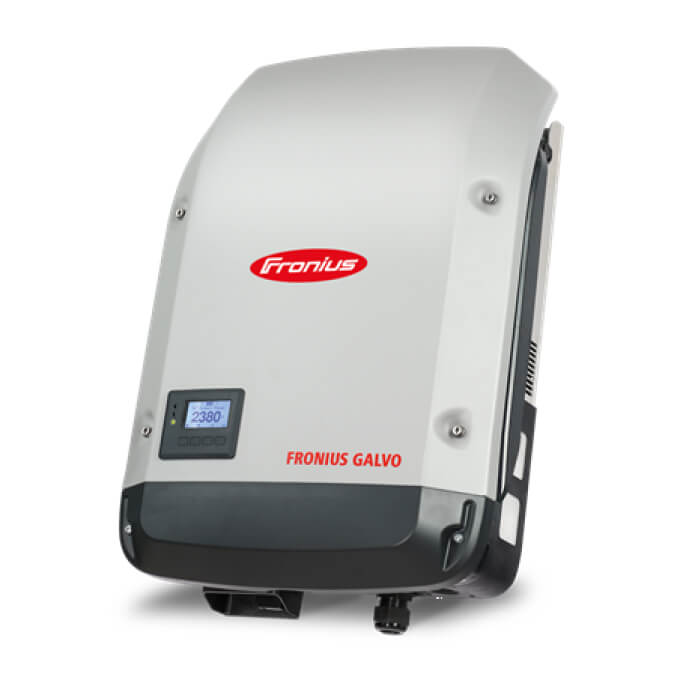 | Fronius Galvo Power: 1.5 ~ 3.1 kW Efficiency: 95.9 ~ 96.1 % Frequency: 50Hz, 60Hz Suitable for: small household/self-consumption |
 | Fronius Galvo UL Power: 1.5 ~ 3.1 kW Efficiency: 95.8 ~ 96 % Frequency: 50Hz, 60Hz Suitable for: private households |
Fronius Primo – for medium private households
Fronius Primo is one of the latest additions in the SnapINverter. Is a transformerless single-phase inverter making it an ideal option for a residential household inverter with power categories ranging from 3.0 to 15kW.
There are 3 different models:
- Primo
- Primo UL
- Primo GEN24 Plus
The Fronius GEN24 Plus is a hybrid inverter with integrated backup power recommended for homes that don’t want to risk running out of light in case of a power outage.
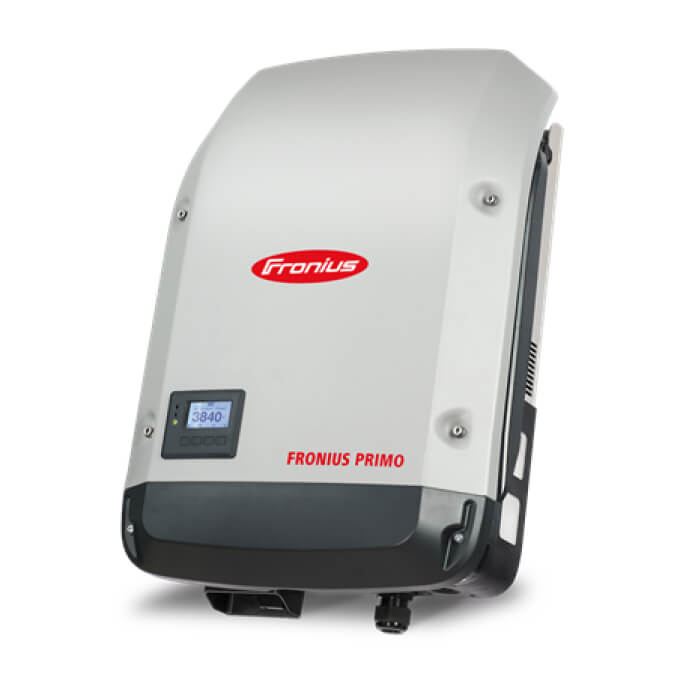 | Fronius Primo Power: 3 ~ 8.2 kW Efficiency: 97.9 ~ 98.1 % Frequency: 50Hz, 60Hz Suitable for: private households |
 | Fronius Primo UL Power: 3.8 ~ 15 kW Efficiency: 96.7 ~ 96.9 % Frequency: 50Hz, 60Hz Suitable for: private households |
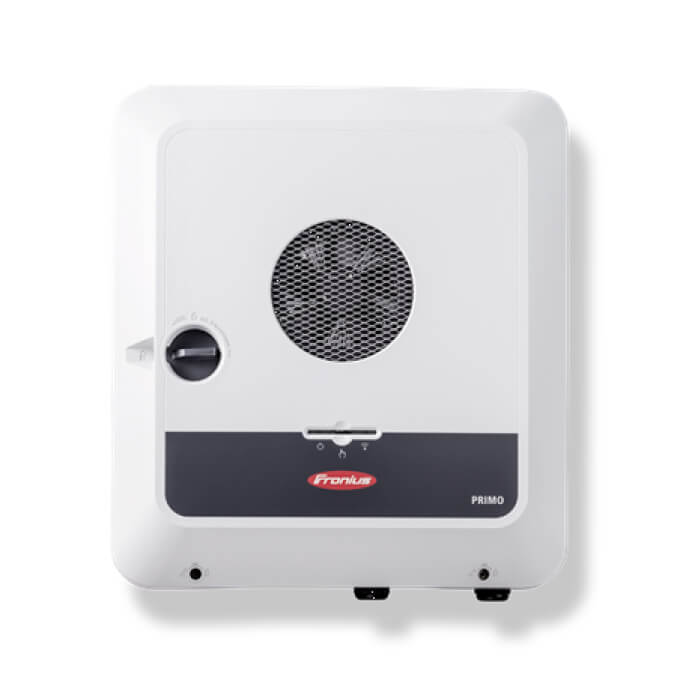 | Fronius Primo GEN24 Plus Power: 3 ~ 6 kW Efficiency: 97.9 ~ 98.1 % Frequency: 50Hz, 60Hz Suitable for: households that want to have backup power in the event of a power outage. |
Fronius Symo – for residential and commercial solar systems
The Fronius Symo is a transformerless three-phase inverter and depending on the model, these inverters can be used in both residential and commercial installations.
There are 4 different models:
- Symo
- Symo UL
- Symo Hybrid
- Symo GEN24 Plus
The Fronius GEN24 Plus is a hybrid inverter with integrated backup power recommended for homes that don’t want to risk running out of light in case of a power outage.
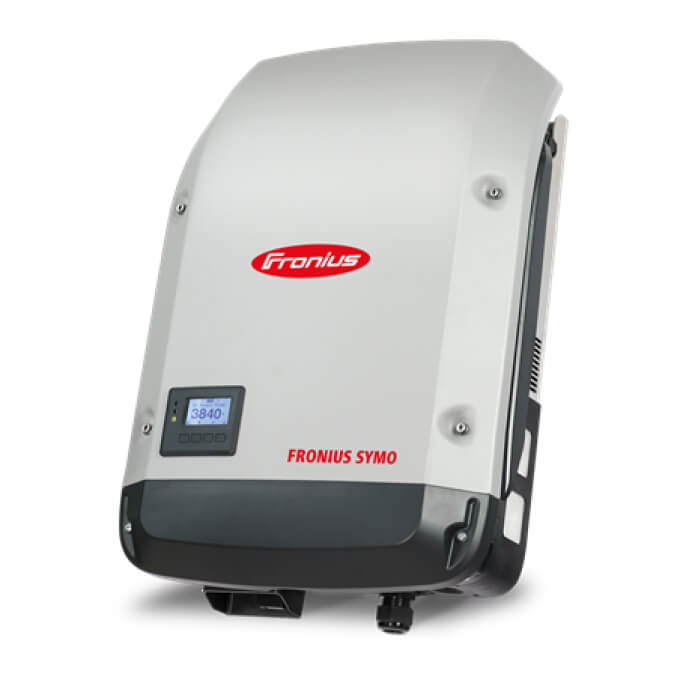 | Fronius Symo Power: 3 ~ 20 kW Efficiency: 98 ~ 98.1 % Frequency: 50Hz, 60Hz Suitable for: irregularly shaped or different roof orientations |
 | Fronius Symo UL Power: 10 ~ 24 kW Efficiency: 97 ~ 98.1 % Frequency: 50Hz, 60Hz Suitable for: commercial systems of any size |
 | Fronius Symo Hybrid Power: 3 ~ 5 kW Efficiency: 97.7 ~ 97.9 % Frequency: 50Hz, 60Hz Suitable for: irregularly shaped or different roof orientations |
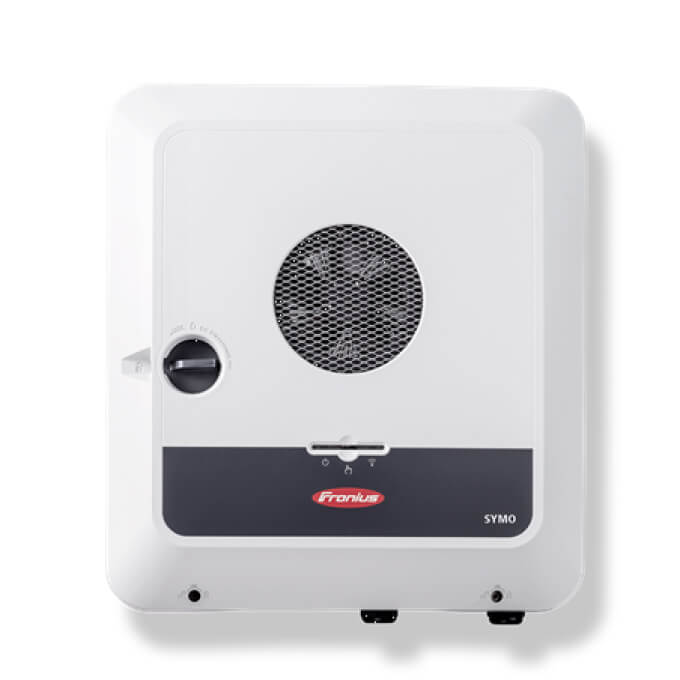 | Fronius Symo GEN24 Plus Power: 6 ~ 10 kW Efficiency: 98.2 % Frequency: 50Hz, 60Hz Suitable for: households that want to have backup power in the event of a power outage. |
Fronius ECO – for large commercial installations
Fronius Eco is a three-phase inverted designed for large-scale installations. It is lightweight and can be installed indoors or outdoors.
String collection boxes are no longer required as it has integrated all-pole string fuse holders and optional DC fuse.
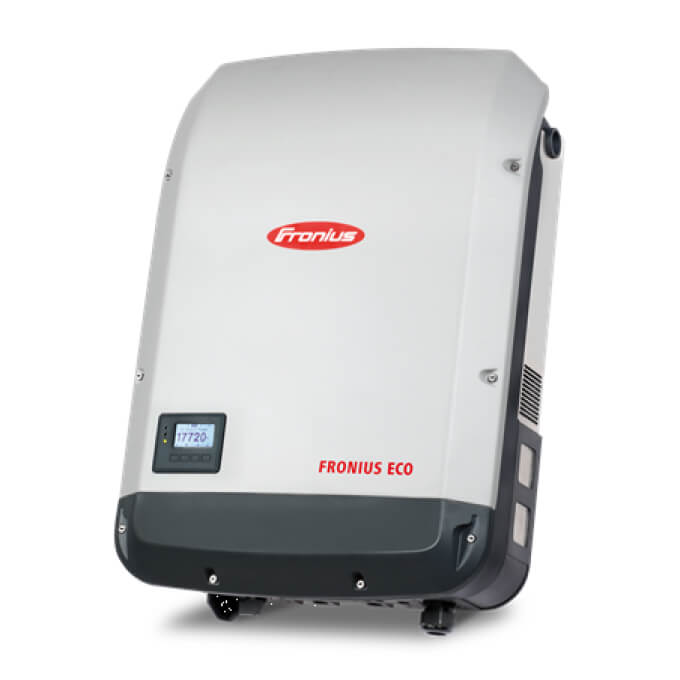 | Fronius ECO Power: 25 ~ 27 kW Efficiency: 98.2 ~ 98.3 % Frequency: 50Hz, 60Hz Suitable for: large-scale installations |
Another company that we trust and is also on top of our list, is Sungrow. This Chinese company was established in 1997 and has been in the Australian market since 2012. In addition, Sungrow offers a wide range of solar inverters suitable for residential, commercial and large-scale projects.
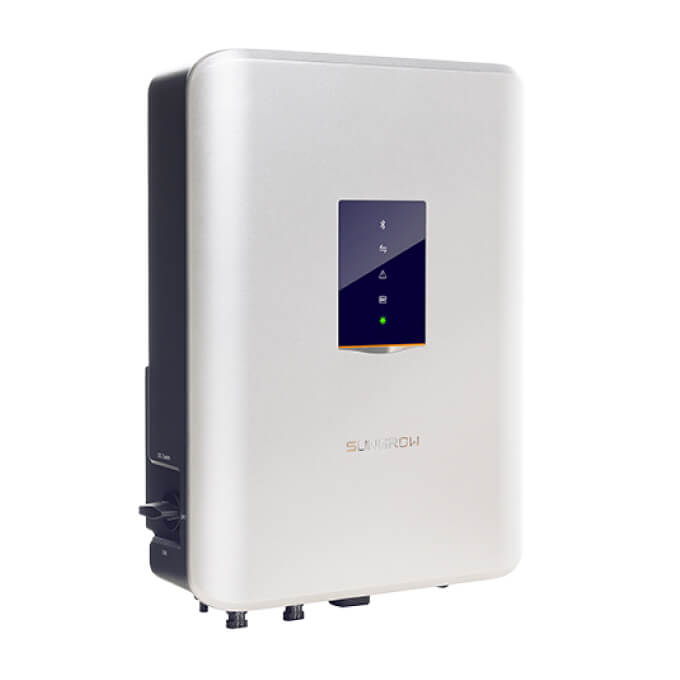
Why Sungrow?
Sungrow has been in the solar inverter industry for a while, and when choosing a reliable and cost-effective inverter for solar or energy storage systems, Sungrow is one of the favourites. In addition, Sungrow offers a ten-year warranty on most new-generation inverters.
Sungrow Range of Solar Inverters
There are different models of Sungrow inverters, some of which are designed to cover the needs of residential homes, while others are focused on bigger commercial installations.
Furthermore, Sungrow Photovoltaic Inverters range from 3 kW to 6.8 MW and offer greater than 99% efficiency, ready for whatever size is needed.
Sungrow String inverters – for residential and commercial
String inverters are more exploited for residential and commercial use, such as for roofs, carports, floor mounting and tracker installations.
These inverters come in a power range between 2.5 kW and 250 kW.
Sungrow Central inverters – for utility-scale applications
Central inverters are created almost exclusively for utility use, or for large buildings, industrial facilities, floating facilities, or large fields.
These inverters have a standard size, their containers are 10 or 20 feet, start with 500kW and can reach a maximum power output of up to 6.8MW.
Sungrow Turnkey Solutions
Sungrow is committed to adapting its services to the different needs that may be found they also provide specific solutions or creations, or adaptable, which can even go from 1.25MW to 6, 8MW.
Sungrow’s range offers inverters and energy storage that adapt to different solutions for efficient operation according to the available budget of each client. Sungrow products can be adapted to existing networks without any problem, according to any required standard certification.
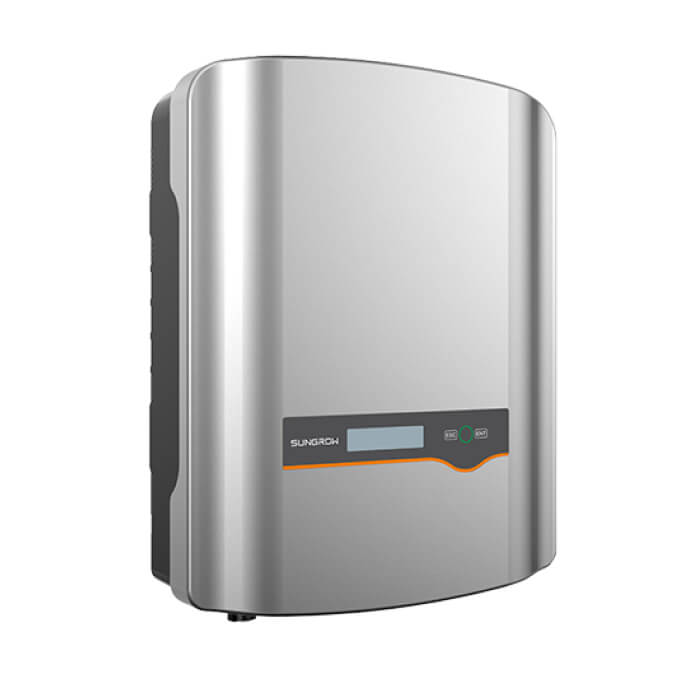 | SG2K/2K5/3K-S – PREMIUM Power: 2 ~ 3 kW Efficiency: 98.2% Frequency: 45 ~ 65 Hz Suitable for: Residential |
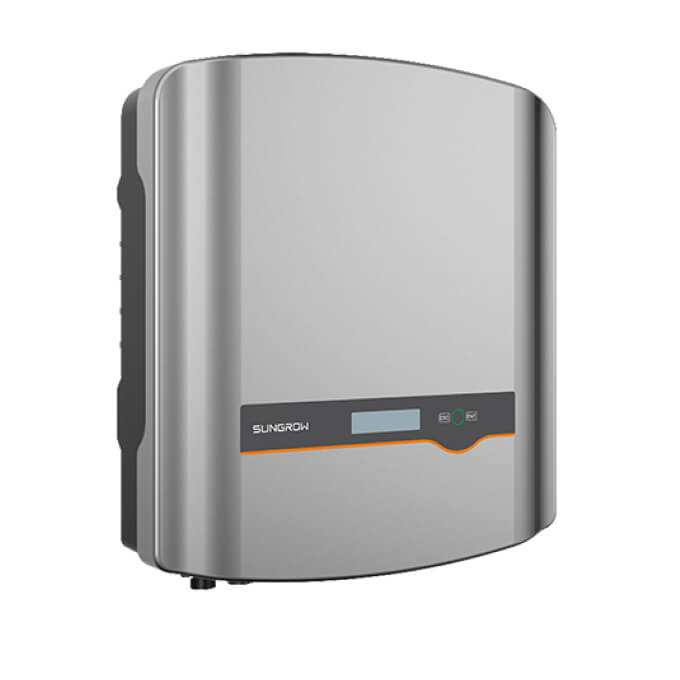 | SG3K6-D/SG4K-D/SG4K6-D/SG6K-D Power: 3 ~ 6 kW Efficiency: 98.4% Frequency: 45 ~ 65 Hz Suitable for: Residential |
 | SG8K-D – PREMIUM Power: 8 kW Efficiency: 98.5 % Frequency: 50 ~ 60 Hz Suitable for: Residential |
 | SG5/6KTL-MT/SG8/10KTL-M Power: 5.5 ~ 11 kW Efficiency: 98.2 ~ 98.4 % Frequency: 50 ~ 60 Hz Suitable for: Residential |
 | SG10KTL-MT Power: 11kW Efficiency: 98.6%, Frequency: 45 ~ 65 Hz Suitable for: Residential |
 | SG/12/15/20KTL-M Power: 13.2 ~ 22 kW Efficiency: 98.6 % Frequency: 50 ~ 60 Hz Suitable for: Residential |
Australian Solar Incentives and Standards in 2025
Australia remains one of the most solar-friendly countries in the world thanks to generous government incentives and strong regulatory standards. These programs can help you maximise savings and ensure your solar installation is future-proof and compliant.
1. Federal Solar Rebate – Small-scale Technology Certificates (STCs)
Australia’s main federal solar incentive comes in the form of Small-scale Technology Certificates (STCs). These are created when you install an eligible solar system under 100kW. The number of STCs you receive depends on your system size and your location’s “zone” (based on solar irradiance).
These certificates are usually handled by your installer and applied as an upfront discount, often reducing the cost of your system by $2,000 to $4,000. The rebate amount decreases slightly every year until 2030, so 2025 is still a great time to install.
To qualify, your system must:
- Use CEC-approved inverters and panels
- Be installed by a CEC-accredited installer
2. State-Based Rebates and Support Programs
In addition to the federal STCs, some Australian states and territories offer their own rebates, interest-free loans, or battery programs:
- Queensland: Currently, there are no state-level rebates for household solar panels or batteries in QLD. However, due to the state’s high solar irradiance, solar systems in QLD typically generate more electricity and, as a result, may receive more Small-scale Technology Certificates (STCs) than those in other states.
- Victoria: The Solar Victoria program continues in 2025 with rebates of up to $1,400 for solar panels and $1,000 for battery installations. Interest-free loans are also available to eligible homeowners.
- New South Wales: While there’s no standard rebate, NSW has previously offered interest-free loans and pilot programs for solar and battery systems. Keep an eye on local government websites for new schemes.
- South Australia: SA has introduced dynamic export limits and previously ran a Home Battery Scheme. Though it has ended, future funding may become available.
- ACT and NT: These regions have offered generous battery grants and solar incentives in the past. Check for current offers, especially if installing solar + storage.
Each state has different eligibility criteria and approved product lists, so confirm that your inverter and installer are compliant with local requirements.
3. Feed-in Tariffs (FiTs)
Feed-in tariffs are what your energy retailer pays you for sending excess solar energy back to the grid. In 2025, these rates continue to decline in most areas and typically range from 5 to 12 cents per kWh.
Because of this, maximising self-consumption of your solar energy is now more important than ever. Features like energy monitoring, battery storage, or load shifting (running appliances during the day) can help you get the most value from your system.
4. Clean Energy Council (CEC) Accreditation
To claim any incentives or connect your system to the grid, both your installer and products must be accredited by the Clean Energy Council. This ensures your solar system is safe, efficient, and compliant with Australian standards.
- CEC-approved inverters must meet AS/NZS 4777.2 standards.
- CEC-accredited installers must follow installation best practices and are regularly audited.
A good installer will always use approved products and be happy to show you their credentials.
5. Smart Inverter Standards
Australia has been a leader in implementing smart inverter requirements. Since 2021, all new inverters must comply with AS/NZS 4777.2:2020, which mandates features like:
- Voltage and frequency response modes
- Remote shutdown capability
- Dynamic export control (required in some states like SA and QLD)
These functions help stabilise the grid and ensure your system can adapt to future network needs. All reputable brands sold in Australia now meet these requirements, but it’s worth confirming your chosen inverter is compliant.
6. Network and Export Limits
Each state and electricity network (DNSP) may have different rules about how much solar energy you can export to the grid. For example:
- Single-phase homes are often limited to a 5 kW inverter export limit.
- Three-phase homes can usually install larger inverters (e.g. 10 kW or more) with balanced export across all phases.
- Some areas may require export limiting or dynamic export settings, which your inverter must support.
All modern inverters from leading brands can be configured for export control. Your installer will handle the setup based on your location and network requirements.
Frequently Asked Questions (FAQ)
Q1. What size inverter do I need? A 5 kW inverter with 6.6 kW of panels is common. Three-phase homes can go larger.
Q2. Difference between single and three-phase inverters? Single-phase is standard for most homes. Three-phase suits larger loads and allows higher export.
Q3. Can I add a battery later? Yes. Choose an AC-coupled battery or start with a hybrid inverter.
Q4. How long will a solar inverter last? Most quality inverters last 10–15 years, with minimal maintenance.
Q5. Are inverters compatible with any solar panels? Yes, most inverters work with any panel brand as long as specs match.
In Closing
The best solar inverter depends on your needs, budget, and future plans. Fronius and SMA are excellent for those wanting premium performance and longevity, while Sungrow and GoodWe offer excellent value. SolarEdge and Enphase stand out for smart systems and shading solutions.
Always ensure your inverter is CEC-approved and installed by a licensed professional. Make the right choice and you’ll ensure your solar system runs efficiently under the Australian sun for many years to come.
Ready to go solar? Ask your installer which inverter they recommend and use this guide to compare options. A smart inverter choice leads to a smarter solar investment.

